
“Leaders who think about the future but then focus on sustaining or efficiency improvements may believe that they have a long-term vision and strategy, but often what they have is a glorified operating plan that perpetuates their assumptions about how their markets work today.” — Mark Johnson (Innovation Show Episode 210)
All Roads Lead to Rome

In pre-Roman times, roads were dirt tracks twisting and turning as they met obstacles. The Romans were the first to build paved roads usable in adverse weather. This vast network of roads was central to the success of the Roman empire. The Romans built a hub and spoke network that made Rome the hub of commerce, trade, politics, culture and military might in the Mediterranean. The spokes represented the roads that connected Rome to the places it ruled, had conquered or would soon conquer. This snapshot of Roman history shows how a vision, supported by the right strategy can ensure years of dominance, even if that dominance will eventually end.
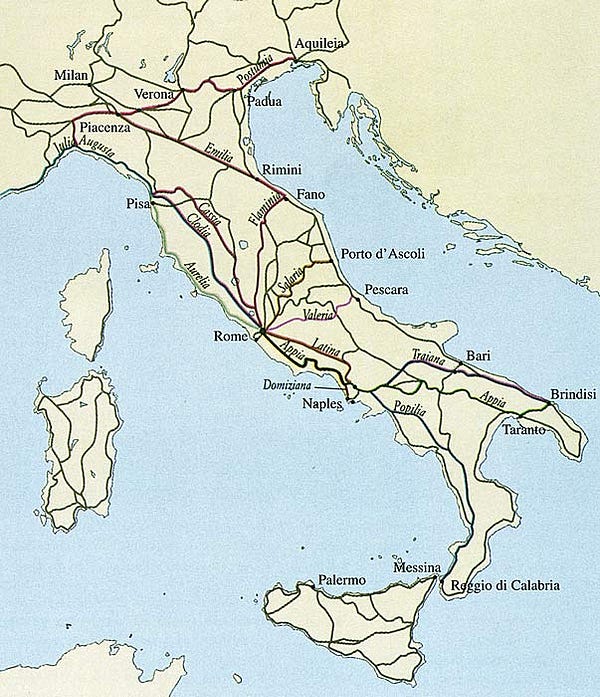
Our guest on the Innovation show this week is co-founder of Innosight, Mark W. Johnson. Mark discusses his latest book, “Lead from the Future”. A core concept of the book is that business leaders must build their businesses with the end in mind, from the future back. A clearly-articulated vision can serve as a roadmap for the future. The vision enables employees to execute in harmony, paving the way from that future back to the present. That is the focus of this Thursday Thought.
Vision Flow and Painting the Golden Gate Bridge

“The world has outpaced us. In the time it took us to move a play from creation to approval, the battlefield for which the plan had been devised would have changed. By the time it had been implemented, the plan — however ingenious in its initial design — was often irrelevant.” — Stanley McChrystal
In this quote, General Stanley McChrystal was referring to the inefficiency of information flow in the US army. He realised the problem was not resource or desire but interoperability and agility. The more complex an organisation, the more complex the information flow. Executing in large organisations is like painting the Golden Gate Bridge. By the time you have finished you need to start all over again. In legacy organisations, by the time you have approval to execute, your more agile competitor (an upcoming startup) has not only executed their strategy, but has leap frogged onto the next strategy, leaving you behind. In organisations, where the founder is no longer actively involved, the vision for the organisation is often missing in action. The organisation can be like an octopus on rollerblades, with lots of movement, but no direction.
Therefore, the role of Vision is so important. The articulation of vision is also the articulation of information. This is what I call Vision Flow. Vision flow is the consistent reiteration of the organisations Vision. We must infuse vision into everything an organisation does. Vision serves as a North Star that guides the organisation. When executives want to make a decision, they ask a simple question, “Does it help us achieve our vision?” Vision is a magnetic pull, it is a guiding light. The Romans enjoyed years of dominance because all Roads lead to Rome, Rome was the North Star of the Empire. An organisation that has enjoyed years of success is Apple. Steve Jobs publicly unveiled the vision of a digital hub strategy on January 9th, 2001. This Vision powered incredible growth and made Apple the world’s first trillion dollar company.
Apple and The Digital Hub
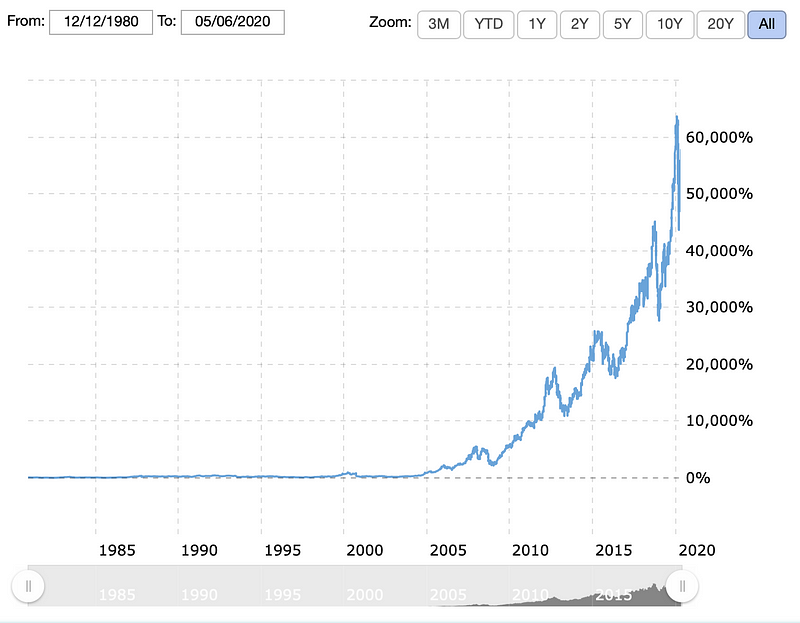
In 2001, commentators speculated that the PC was in decline, that the end was nigh. In his usual style, Steve Jobs announced that the PC was not dead, it had just evolved. The years that followed that announcement saw phenomenal growth and innovation that made Apple a runaway success. Great leadership, significant innovation and great marketing were all partly responsible for that success. Above all, the secret to Apple’s success was the vision of a Digital Hub.
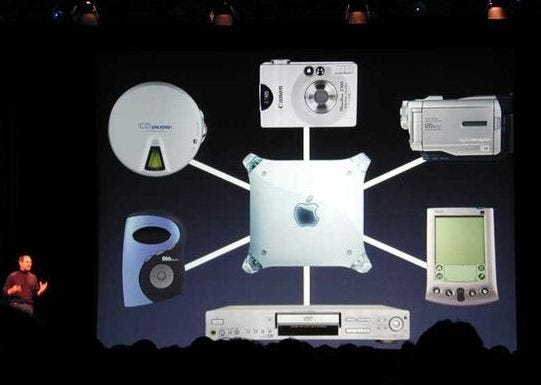
Jobs opened his keynote with a Vision Back statement, he said, “What is our Vision? A lot of people have come to ask that of our whole industry.” Then he laid out that vision.
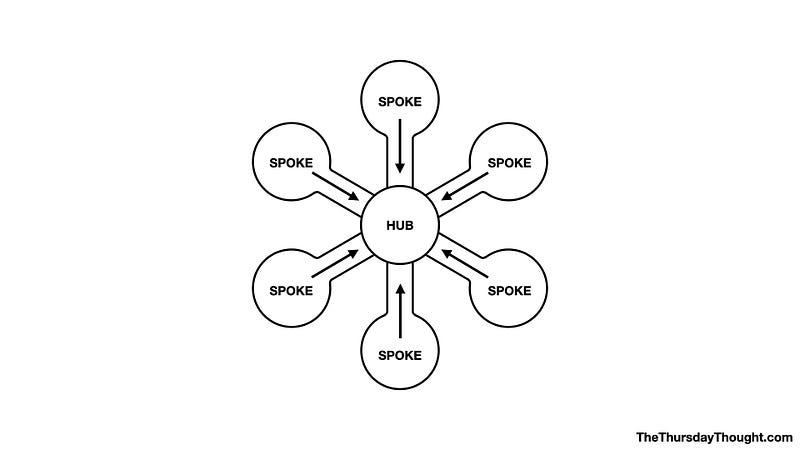
At the turn of the Millenium, consumer digital devices were everywhere. There were DVD players, digital cameras, CD players and their new cousin the mp3 player. They were stand-alone devices, some did not even have the facility to connect to the Internet. The devices were like the territories that the Romans were yet to conquer. They needed a system to connect them all. If you could connect these disparate products, you could become the Roman empire of the PC industry. This all makes sense to us now, looking back at the strategy as a fait accompli. It is easier to look from the present back, but Jobs’ incredible vision painted a future back strategy. This future back approach would place the PC at the centre, as the hub to interconnect disparate digital devices.
Jobs announced the “Digital Hub” strategy publicly, painting the picture for his company, for consumers and even for competitors. What he did not tell us was that Apple would not just produce the PC, as the hub, but would, in time, produce the spokes that connected to that Hub. This strategy gave birth to the iPod, iTunes, iPhoto and later iCloud, iPhone, iPad, iWatch and perhaps even the iCar. When we clearly articulate a vision and commit to that vision it becomes easier to execute. If you have created the right environment for innovation to prosper, then your people will act as like IoT sensors to detect opportunities to move towards that vision.
Ahead of the Curve
When we embrace edge behaviours, and emerging trends, we prepare for the future before it arrives. We can get ahead of technology. One such example is Apple’s iPod. As two-time innovation show guest, Greg Satell told us Apple had conceived the iPod before the technology had caught up. How did Apple know the tech would eventually arrive? By embracing trends such as Moore’s law and general industry trends, Apple knew that computing power doubles about every eighteenth months. They also knew devices would get smaller, cheaper and more powerful. If they could be sure the technology would eventually arrive, they could get ahead of the market by designing the iPod interface, its interoperability with iTunes and connection with the digital hub. They could even prepare the marketing message. Once Toshiba delivered a prototype hard drive, Apple bought the patent, and the rest is history. Another hit product and another spoke to connect to the hub. As Mark Johnson tells us on the Innovation Show, these new spokes like the iPod and iPhone were not just products, they were business models in their own right. They became new hubs to enhance to the Apple ecosystem and build the Apple-an Empire.
The clear vision, articulated by Jobs, informed every aspect of the organisation, from the product development strategy to the technology and patent acquisition strategy.
The Vision and Execute Model
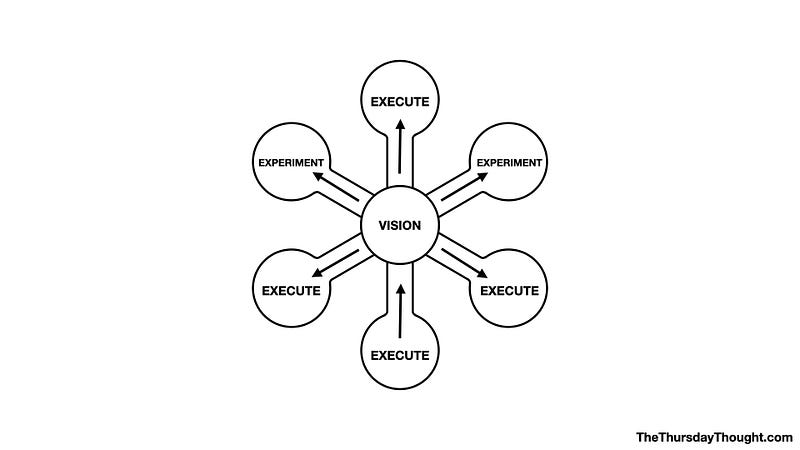
“Where there is no vision, the people perish.” — Proverbs 29:18
The Hebrew word paw-rah’ means “to perish”. Paw-rah’ was the word used in a biblical proverb where a woman’s hair flowed out of its covering (hairband). Unconstrained in the wind, her hair is directionless and blown in all directions. So many employees find themselves in the same state, especially today, as the winds of creative destruction blow wildly. Leaders can change this, humans need purpose, we need meaning and we need to strive towards a vision. In the image above, I exchange the Hub at the centre with a vision, then I invert the arrows coming from the vision back to the present. Notice there are some spokes reserved as experimentation spokes. This is a key step missing from so many organisations. Once you are profitable, you must reinvent, and experiment, just like Apple did with the iPod. As Jobs identified, you will always reach a stall point. This is a signal that you have stopped evolving, which is a signal of decline.
The Romans paved the way to the future by literally paving the way from that future back to Rome. Apple paved the way to their future with a powerful vision of what Apple would eventually become. In absence of such vision, an organisation blows directionless in the wind.
The Romans gave us a network of roads. Apple gave us the Digital Hub. Leaders, it is time to give your people a vision, which they can execute. In this post-Covid world, vision is more important than ever before.
“If you can hold it in your head, you can hold it in your hand.” — Bob Proctor
THANKS FOR READING
This week’s Innovation show is episode 210 with Mark W. Johnson, co-founder of Innosight and author of Lead from the Future.
Mark and his team, including a friend of the show Scott D. Anthony and future guest Clark Gilbert, have been preparing businesses for disruption for decades. This episode is a must listen for business leaders and individuals alike.
Have a listen:
Soundcloud https://lnkd.in/gBbTTuF
Spotify http://spoti.fi/2rXnAF4
iTunes https://apple.co/2gFvFbO
Tunein http://bit.ly/2rRwDad
iHeart http://bit.ly/2E4fhfl